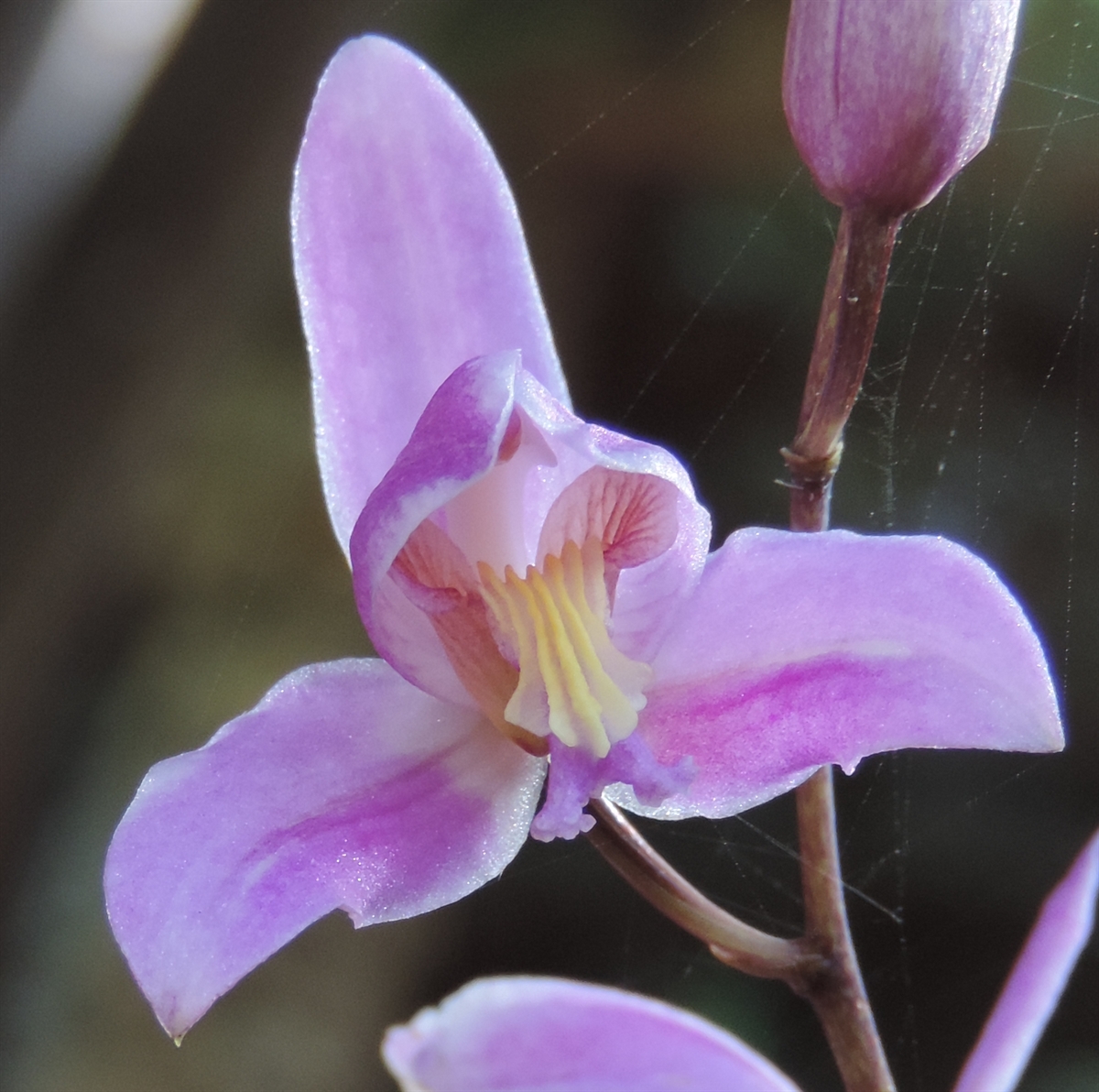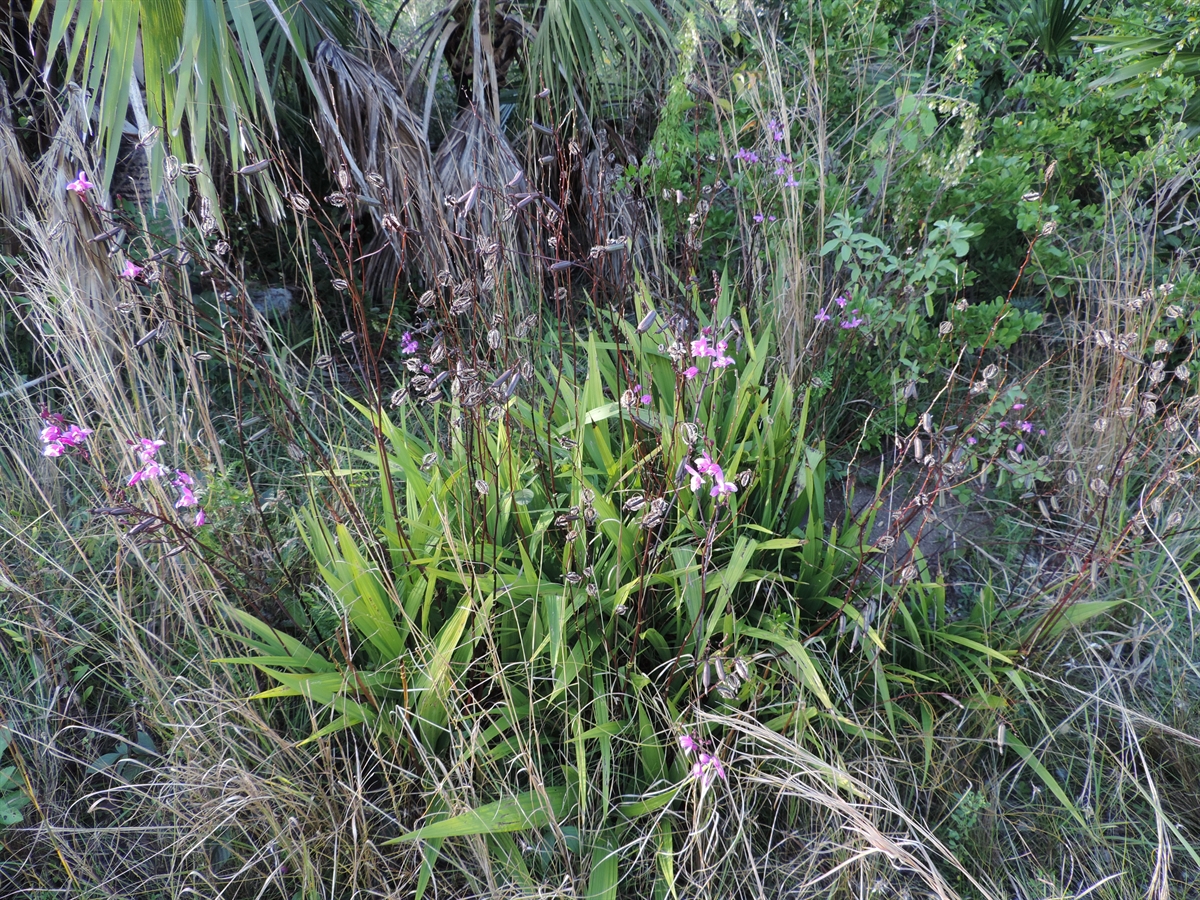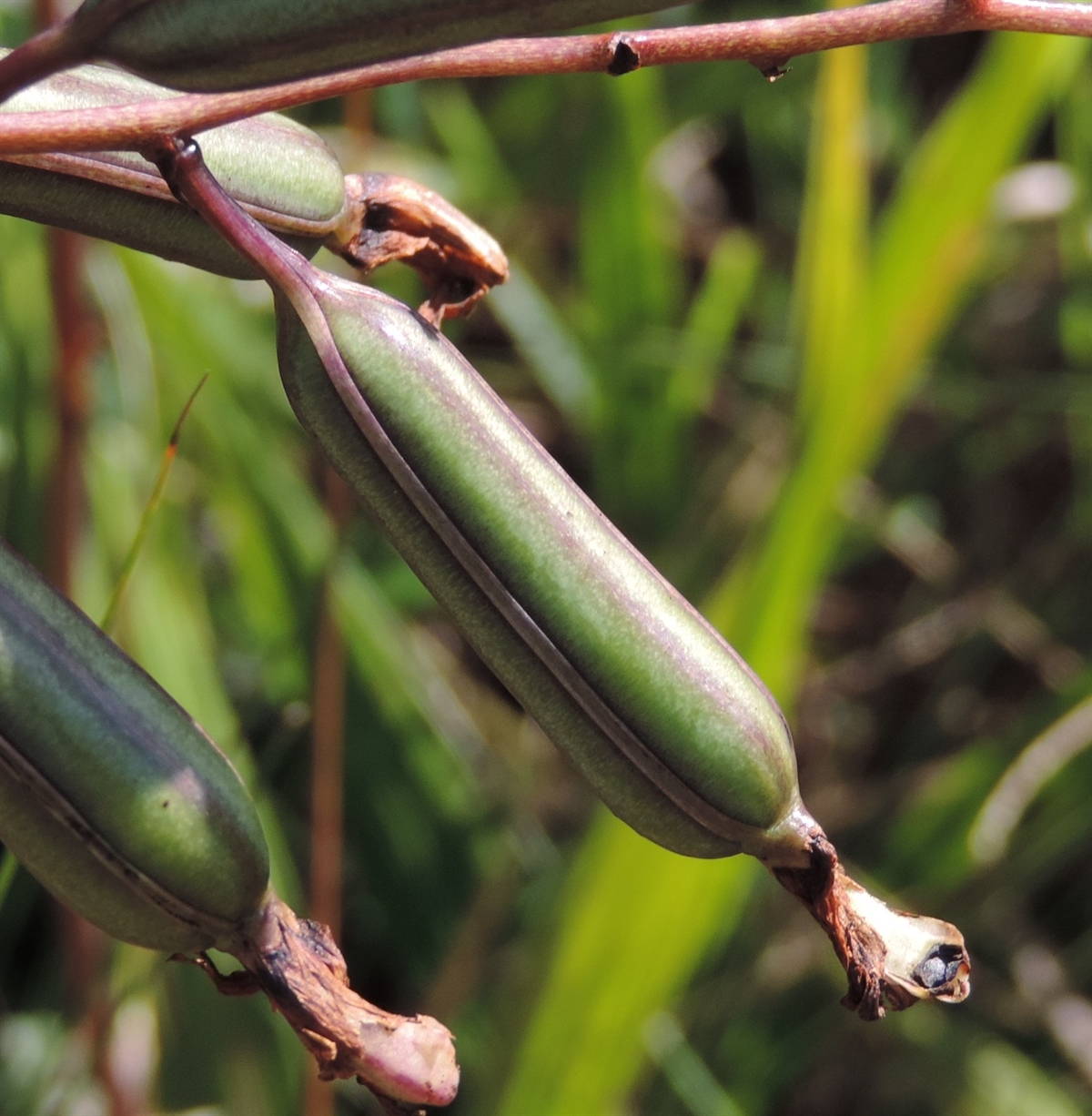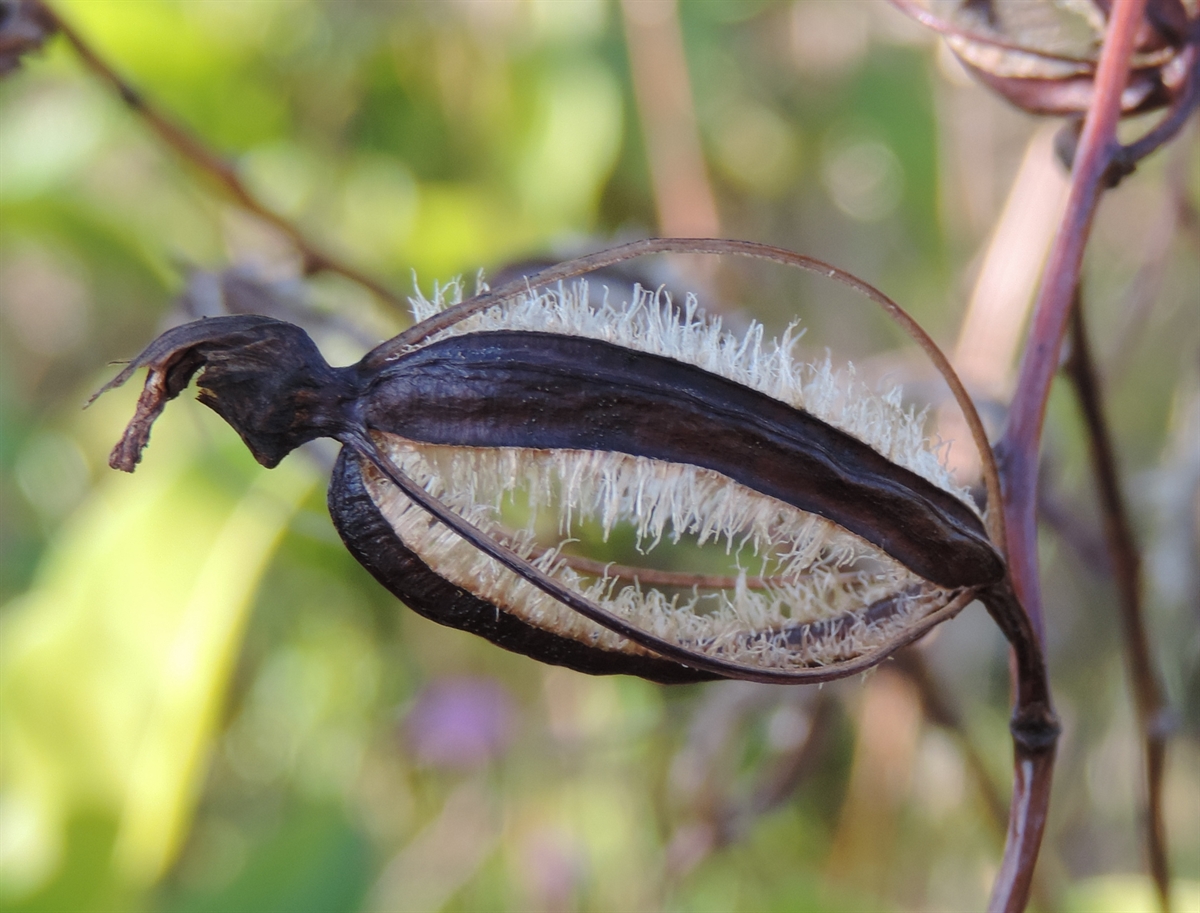Habit: Bletia purpurea grow as an epiphyte or among leaf detritus and soil. It produces a very short round stem that is covered with secondary stems that are expanded to form round pseudobulbs up to 10 cm in length. From the top of the pseudobulb thin, flattened linear leaves emerge that are up to 50 centimeters in length. The pseudobulb is typically below ground.
The complete, perfect, zygomorphic flowers are arranged in terminal racemes up to 75 cm in height and contain 10-15 flowers that are produced in the winter between November and February. The flowers have bracts and the calyx has 3 pink-purple sepals that turn darken with age. The corolla has three petals with one forming the labellum. The labellum is three lobed and pink-purple. Two lobes of the labellum wrap around the pinkish white column. The column is formed from a fusion of the stamens and ovary into a single structure. The ovary is inferior. The fruit is a dark capsule at maturity up to 4 cm in length that opens along six suture lines and hangs allowing wind to assist in seed dispersal.
Habitat: Bletia purpurea grows in Pine Woodlands and ephemeral Fresh Water Wetland areas.
Distribution: Bletia purpurea occurs in the northern island groupings of the Lucayan Archipelago, Caribbean, Florida, Central and northern South America.
Medicinal/Cultural/Economic usage: While there are no medicinal uses of Bletia purpurea like all orchids they are prized for their beautiful flowers. ALL orchids are protected internationally by the Convention on the International Trade of Endangered Species (CITES) and should not be collected from the wild.




